Top Tier CPU Air Coolers Q3 2015: 9-Way Roundup Review
by E. Fylladitakis on July 6, 2015 8:00 AM ESTThe Phanteks PH-TC14PE
Phanteks is another world-renowned CPU cooler manufacturer, whose high performance designs made them widely known very quickly. Aside from coolers and fans, the company is now active in the field of PC cases as well. For the means of this review, Phanteks supplied us with the PH-TC14PE, their largest and most popular CPU cooler. The PH-TC14PE actually is over two years old, making it the oldest design in this roundup review.
Phanteks supplies the PH-TC14PE in a large cardboard box with an abstract design showcasing the color variations of the cooler. Inside the box, the cooler is well protected within a polyethylene foam shell and the bundled items are secured in small boxes. Aside from the hardware necessary for the mounting of the cooler, Phanteks also provides a tube of quality thermal grease, six anti-vibration rubber strips for the fans, a fan power cable splitter, a fan speed reducer. They also provide six wire clips and twelve plastic fan clip adaptors, for the installation of up to three fans onto the cooler's body.
The PH-TC14PE is a very large symmetric dual tower cooler. The fronts of the fins form small circular notches, with the exception of the top fin that is straight and serves as a cover for the heatpipes as well. One of its prominent features is instantly apparent, which is the colored fins. There are five color variations of the PH-TC14PE and we received the black version. Phanteks calls this "Physical Antioxidant Thermal Shield" (or Physical Antioxidant Thermal Spraying - we found both in the company's texts) and claims that it enhances thermal performance by both increasing the dissipation rate of the heatsink itself and decreasing the radiation absorption rate from other heat sources. The fins are soldered on the heatpipes with another patented method that Phanteks calls "Cold Plasma Spraying Coating", which supposedly increases the heat transfer rate between the copper heatpipes and the aluminum fins.
Phanteks provides two of their own PH-F140 140 mm fans with the PH-TC14PE. The company loves abbreviations, so the PH-F140 have "Updraft Floating Balance (U.F.B)" bearings, "Maelstrom Vortex Booster (M.V.B)" blades and "Maelstrom Air-Fort Optimization (M.A.F.O)" drive systems. Other than the fancy names, no real technical data or schematics of these technologies can be found. All we are left with is their standard manufacturer specifications, which indicate a maximum speed rating of 1300 RPM (1200 RPM in PWM mode). The design of the wire clips allows the fans to be moved upwards by several centimeters, providing clearance to RAM modules and heatsinks that would otherwise be blocked, assuming that the case is wide enough of course.
The base of the PH-TC14PE is simplistic, virtually meant only to provide mechanical retention for the installation on a CPU. Five thick 8 mm heatpipes run through the base and to both fin arrays on either side. The copper bottom half of the base and the heatpipes are nickel-plated, with the contact surface polished fairly well but not down to a perfect mirror finish. Slight machine marks can be seen on the contact surface but there are no major imperfections to speak of.


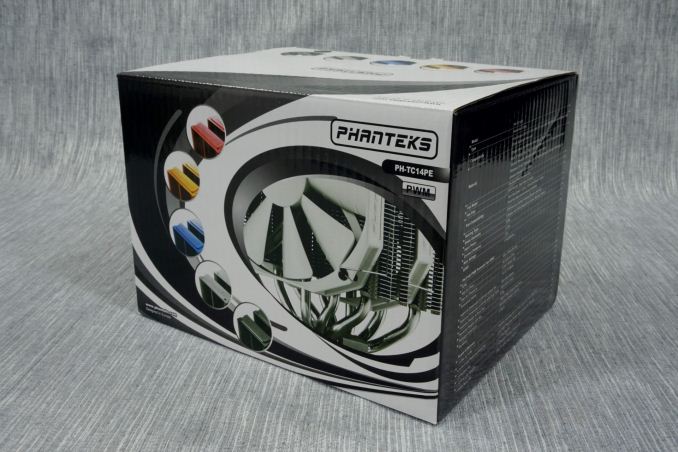
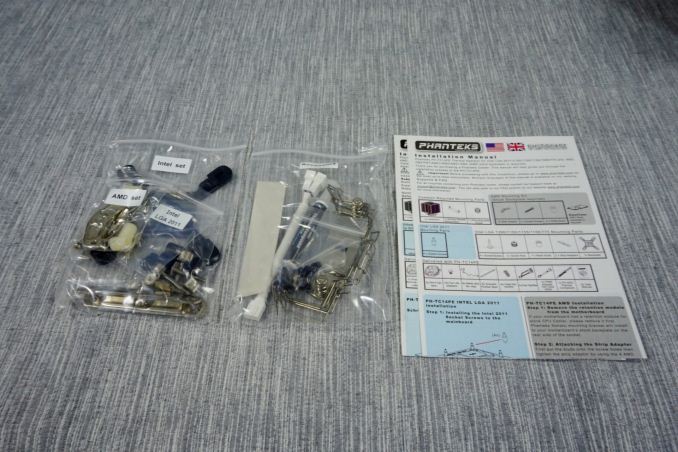
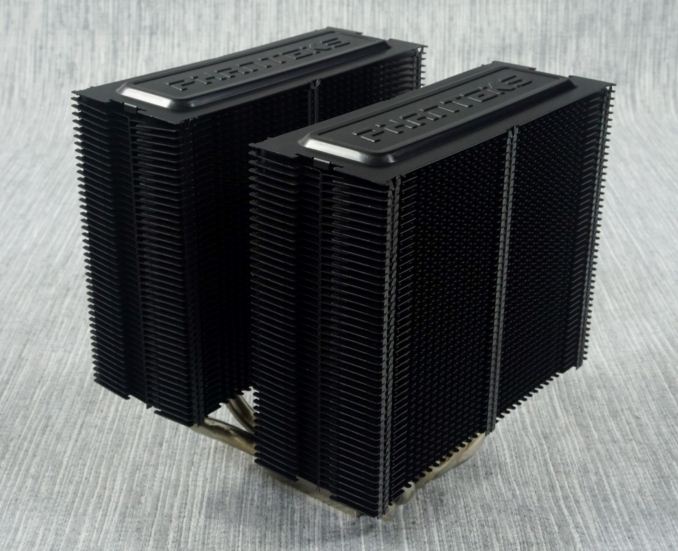
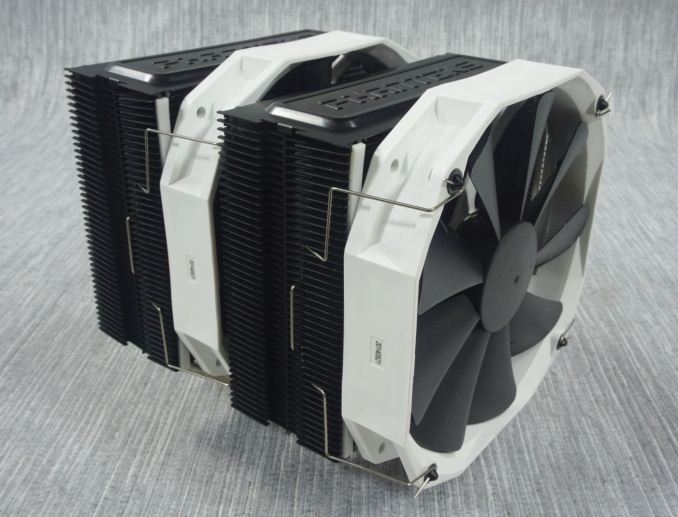
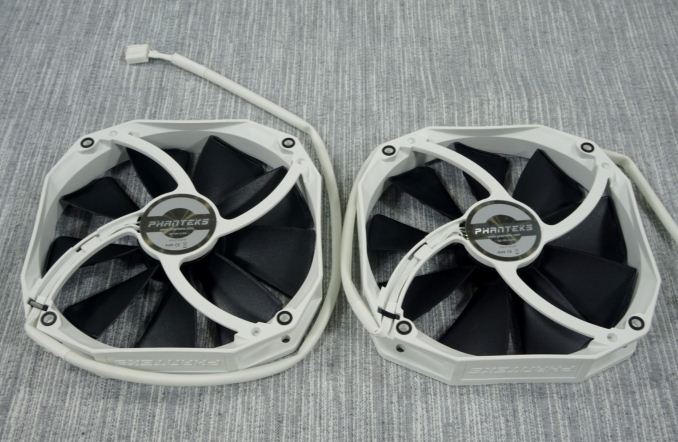
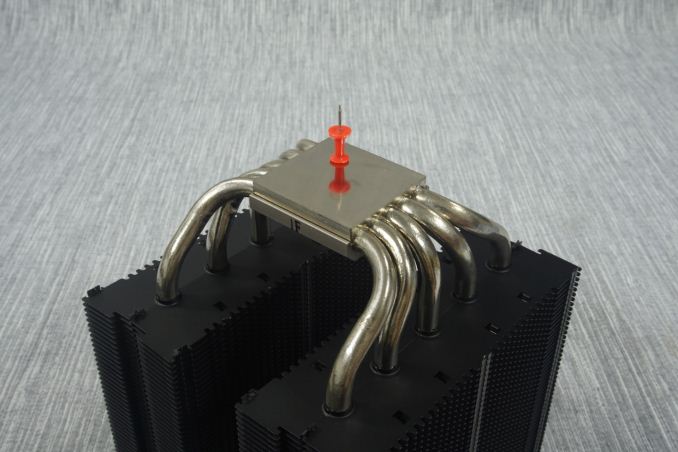








135 Comments
View All Comments
TheJian - Tuesday, July 7, 2015 - link
http://www.anandtech.com/show/6830/cpu-air-cooler-...It is far more impressive than you give it credit for. I easily hit >5ghz on this fan with i4790K.
Shadow7037932 - Tuesday, July 7, 2015 - link
If you're going to extreme OCing, why the hell aren't you on custom water cooling or Dice/LN2?Nfarce - Wednesday, July 8, 2015 - link
Because where I am in overclock, the best air keeps up with the best closed loop kit cooling for far less money.tabascosauz - Monday, July 6, 2015 - link
What farce said is true. At high voltages and overclocks, the 212 EVO breaks down and the dual towers begin to shine.DanNeely - Monday, July 6, 2015 - link
Which with simulated thermal loads ranging from 60-340W should have been made apparent in the course of testing.I would hope and expect that most if not all of these coolers would out perform it, especially at higher loads. But as a de-facto standard budget cooler for people who want something better than Intel's I think it should've been added to the matrix to show how much better these bigger ones performed. A stock Intel cooler should've been included as well for the same purposes (at least at the lower loads; no sense risking burning the test setup by trying to broil 340W through it). Including a mainstream reference point is especially important in this case because E. Fylladitakis's synthetic test load means that we can't cross reference his results with those found elsewhere.
SUpstone - Thursday, October 29, 2015 - link
Totally agree - to get the full picture and to aid comparability with other tests the reference points of the Intel stock cooler (free) and CM 212 EVO (£25) should be included.Flunk - Monday, July 6, 2015 - link
If you buy one of those things on sale I've seen them as low as $30, which if you don't need better cooling, is a good deal. The reason the Hyper 212 EVO is popular is that it's cheaper than most of it's competition and easily available. They're good enough for moderate overclocking on a 1150-series chip so they do fit the bill for a lot of people. Something being popular doesn't make it bad.Pastuch - Monday, July 6, 2015 - link
I have 2 of the original Hyper 212 (Non-evo) on two different I5-2500Ks that have been running super quiet at 4.4ghz for the last 4+ years. No coil whine or bearing degradation on the fans. I paid $20 for each Hyper 212 Evo. The value for the money is amazing. It's an excellent quality reliable product and it's easy to install.I paid $220 for my I5-2500k, 20$ for the Hyper 212 Evo, and $70 for 8gbs of PC 1333 in February of 2011. At 4.4ghz, it's still within 5% as fast as any CPU on the market. Sandy Bridge FOREVER! I'll keep buying video cards. You can waste your money on HSF upgrades for CPUs that become less important every day. DX12 is just going to make the CPU even less useful.
Pastuch - Monday, July 6, 2015 - link
Just to clarify, those are Canadian prices which makes them even more amazing. The new I5-K in Canada is almost $300! No thanks.northward - Monday, July 6, 2015 - link
Remember, the average exchange in 2011 was 1.011 (CAD to USD). It is presently 0.79 (CAD to USD). Assuming US/CAN price parity in 2011, that $220 cooler would cost ~$278, not that far behind the $284 i5 4690K.